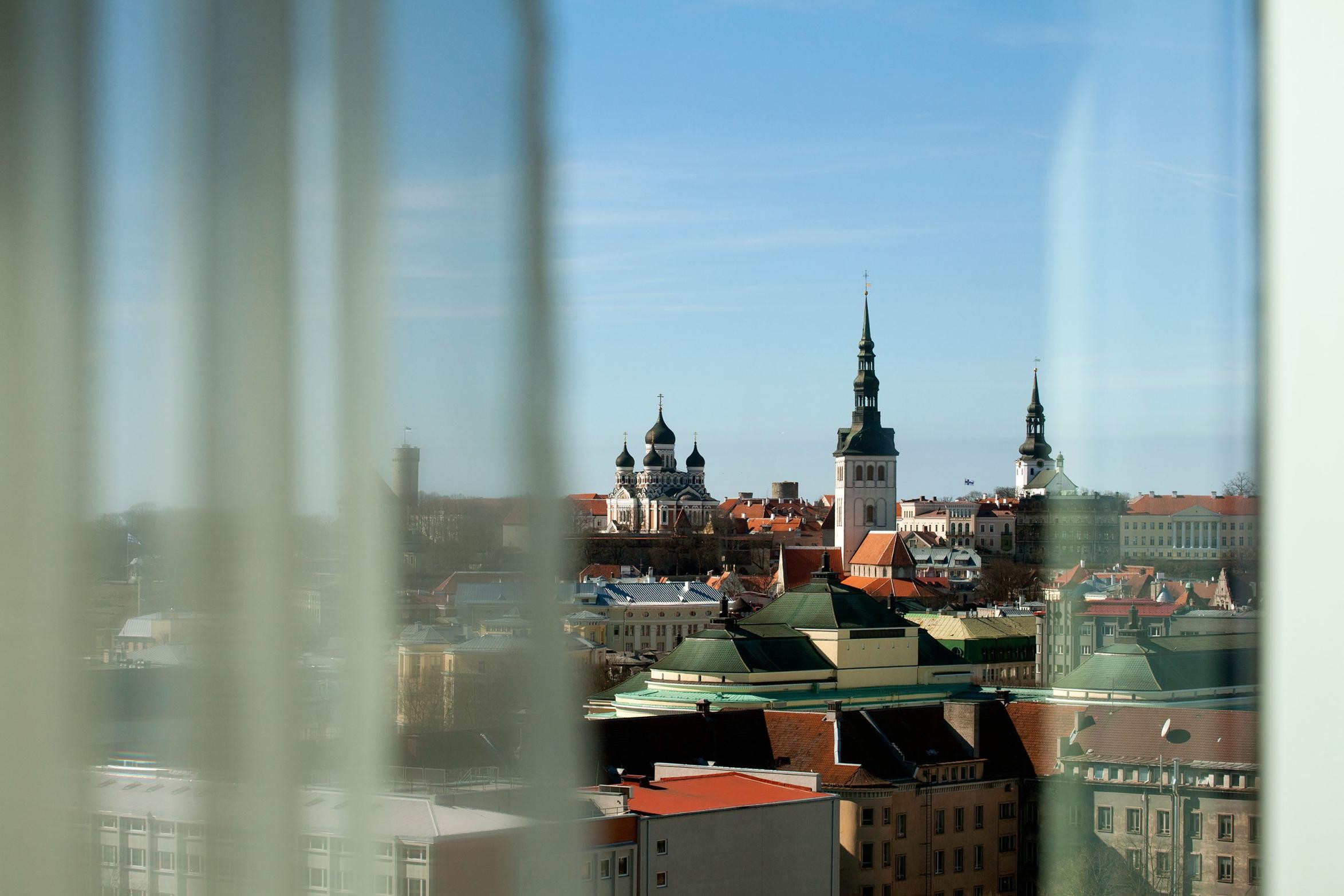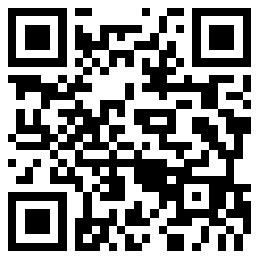很多人在地圖上找不到這個彈丸小國,,但它可能在引領世界科技的未來
?
|
春日一個午后,我坐在愛沙尼亞首都塔林市郊的辦公室里看著窗外散步的人們,,突然一個裝著輪子的奶油色塑料容器出現(xiàn)在街角,,在行人間穿梭??雌饋硐駛€兒童玩具,,但實際上是個名叫Starship的高科技送貨機器人,也有可能成為這座歐洲北部彈丸小國出產的另一款高利潤發(fā)明——誰能想到如今的愛沙尼亞會成為高科技的搖籃呢,?!叭绻磿r間背景設在未來20年以后的科幻電影就會發(fā)現(xiàn),沒人會抱著雜貨回家,。機器人會送貨上門,,” Starship科技公司聯(lián)合創(chuàng)始人兼首席執(zhí)行官阿迪·赫恩拉表示。他說,,現(xiàn)實世界已經(jīng)追上了科幻電影,。“大概兩年前我們發(fā)現(xiàn)這部分未來已經(jīng)可以實現(xiàn),?!?/p> 如果想體驗下未來人類如何生活,估計地球上最好的地方就是這座40萬人口的美麗古城,,中世紀小道在城中蜿蜒,,與數(shù)字化的現(xiàn)代社會形成鮮明對比。用赫恩拉的話說,,現(xiàn)在就開始創(chuàng)造未來,,這正是愛沙尼亞積極推動的項目,而且日漸成為發(fā)展的核心,。 大部分美國人,,甚至很多歐洲人都很難從地圖上找到愛沙尼亞這個小國,,擠在同樣臨波羅的海的小國拉脫維亞和龐大的俄羅斯中間,。人口只有130萬,,跟達拉斯或紐約布朗克斯區(qū)人口差不多。但國土面積小又地處偏遠掩蓋了其非凡的實力,。正是在此,,赫恩拉跟一群朋友發(fā)明了互聯(lián)網(wǎng)上極受歡迎的電話平臺Skype。 但從愛沙尼亞的歷史來看,,Skype的發(fā)明其實有些諷刺,。大約25年前,美國人還在紛紛選購第一部手機時,,愛沙尼亞作為前蘇聯(lián)的前哨站與外部世界隔離,。想裝部固定電話等上10年很正常。隨著1991年前蘇聯(lián)解體,,整個國家仿佛經(jīng)歷了時間扭曲,。“當時真是一窮二白,,” 愛沙尼亞國防軍司令里霍·德拉斯將軍表示,,當時他曾是學生積極分子。全國只能從零開始,。德拉斯說當時每位市民分到了約10歐元的貨幣,,合10.60美元?!熬湍敲葱?,”他邊說邊笑?!拔覀兙褪菑?0歐元起家的,。” 一代人過去了,,愛沙尼亞仿佛經(jīng)歷了另一種時間扭曲:變成生活高度數(shù)字化發(fā)展的典范,。對于外界人來說,看愛沙尼亞就能了解國家放棄原有系統(tǒng),,選擇完全轉向在線化會怎樣,。這一切并非幻想。全世界的政府,,包括新加坡,、日本和印度等都在考慮采用各種方式轉型為數(shù)字實體,以削減成本并精簡服務(對某些國家來說則可以更密切地監(jiān)視民眾),。愛沙尼亞表示在線系統(tǒng)每年將GDP增長提升2%,。 |
On a Spring afternoon, I’m gazing out the window of an ?office building on the outskirts of Estonia’s capital, ?Tallinn, watching people stroll below, when a cream--colored plastic container mounted on black wheels rounds the corner and begins maneuvering its way among the pedestrians. The device looks like a kid’s toy. But in reality it’s a high-tech delivery robot called Starship and potentially the next mega-profitable invention to spring from this snowy, miniature country on the northern edge of Europe—one of the more unexpected launching pads on the planet. “If you look at sci-fi movies set 20 years from now, you don’t see people carrying their groceries. Robots just arrive at their homes,” says Ahti Heinla, cofounder and CEO of Starship Technologies. Reality, he says, has caught up to sci-fi. “About two years ago we realized it was possible to create this part of the future right now.” For a snapshot of how we might all be living tomorrow, there are few better places to visit than this picturesque city of 400,000, whose winding medieval alleyways offer an elegant contrast to its digital present. Creating the future now, as Heinla puts it, is Estonia’s driving project, and increasingly it is its core business too. Most Americans or even Europeans would be unable to find this pinprick on a map, squeezed between its small Baltic Sea neighbor Latvia and mammoth Russia. Its population, just 1.3 million, is about the same as Dallas or the Bronx borough of New York City. But its ?modest size and remoteness belies its clout. It is here that a group of friends, including Heinla, invented the hugely popular Internet calling platform Skype. Given Estonia’s history, the invention of Skype in this country was ironic. While Americans were buying their first cell phones, about a quarter-century ago, Estonians were shut off from the world as an outpost of the Soviet Union. You could easily wait 10 years to be assigned a landline phone. By the time the Soviet Union imploded in 1991, the country was in a time warp. “We did not have anything,” says Gen. Riho Terras, the commander of Estonia’s armed forces, who had been a student activist at the time. The country had to reboot from zero. Terras says each citizen was given the equivalent of 10 euros, or $10.60. “That was it,” he says, laughing. “We started from 10 euros each.” One generation on, Estonia is a time warp of another kind: a fast-forward example of extreme digital living. For the rest of us, Estonia ?offers a glimpse into what happens when a country abandons old analog systems and opts to run completely online instead. That notion is not fanciful. In various forms, governments across the world, including those in Singapore, Japan, and India, are trying to determine how dramatically they can transform themselves into digital entities in order to cut budgets and streamline services (and for some, keep closer tabs on citizens). Estonia claims its online systems add 2% a year to its GDP. |

Starship科技公司聯(lián)首席執(zhí)行官阿迪·赫恩拉展示公司一款送貨機器人。赫恩拉也是Skype軟件創(chuàng)始團隊成員,該軟件2003年于愛沙尼亞上線,。攝影:Piotr Malecki—— Panos圖片公司向《財富》提供
|
我在塔林剛一落地,,手機就連上了城市免費無線網(wǎng),15年前無線網(wǎng)就實現(xiàn)全面覆蓋,。但普通愛沙尼亞人的高度數(shù)字化生活體現(xiàn)在各種細節(jié),。出生時每個人都會獲得自己的11位數(shù)字代碼,從出生起就會影響生活的方方面面,,這就是21世紀的社會保障號碼,。愛沙尼亞人的數(shù)字習慣從小就養(yǎng)成了:孩子們在學校就開始學編程,很多從幼兒園就開始學習,。 2000年,,愛沙尼亞是全球第一個宣稱互聯(lián)網(wǎng)是基本人權的國家,互聯(lián)網(wǎng)的地位跟食物和庇護差不多,。當年愛沙尼亞還通過一項法案,,宣布數(shù)字簽名與手寫簽名具備同樣效力。由此開啟了完全無紙化系統(tǒng),。由于不需要用筆簽名,,申報稅務、銀行開戶,、申請貸款,、提取處方和生活中絕大部分事務都不需要紙質文件,不過結婚和離婚除外,?!拔覜]到20分鐘就成立了公司,哪都沒跑,,” 41歲的Funderbeam公司首席執(zhí)行官Kaidi Ruusalepp表示,。她于2013年創(chuàng)立了Funderbeam,為早期非上市類型的創(chuàng)業(yè)公司提供投資交易平臺,?!拔覀儚膩頉]去過稅務局,也沒去過社保機構,,等等,,”她表示?!八卸伎梢栽诰W(wǎng)上完成,。” |
The moment I land in Tallinn, my phone pings with the city’s free Wi-Fi network, which rolled out more than 15 years ago. But the extreme-digital life of regular Estonians is far less visible. At birth, every person is assigned a unique string of 11 digits, a digital identifier that from then on is key to operating almost every aspect of that person’s life—the 21st-century version of a Social Security number. The all-digital habits begin young: Estonian children learn computer programming at school, many beginning in kindergarten. In 2000, Estonia became the first country in the world to declare Internet access a basic human right—much like food and shelter. That same year it passed a law giving digital signatures equal weight to handwritten ones. That single move created an entire paperless system. Since no one was required to sign with a pen, there was no need for paper documents to pay taxes, open a bank account, obtain a mortgage, pick up a prescription, or perform most of life’s other tasks, other than marrying and divorcing. “I established my company in about 20 minutes, without going anywhere,” says Kaidi Ruusalepp, 41, CEO of Funderbeam, an investment trading platform for early-stage, non-IPO startups, which she founded in 2013. “We never visited the tax board, the Social Security agency, anything,” she says. “Everything is online.” |

創(chuàng)業(yè)公司Funderbeam創(chuàng)始人兼首席執(zhí)行官Kaidi Ruusalepp在塔林的辦公室里,。攝影:Piotr Malecki—— Panos圖片公司向《財富》提供
|
愛沙尼亞的稅務系統(tǒng)也一樣,。幾乎所有的愛沙尼亞人都在線申報,,幾分鐘就能完成。由于所有公眾登記匯入同一個系統(tǒng),,愛沙尼亞人可以登入預先準備好的稅務申報系統(tǒng),,其中會顯示收入、資產,、有幾個孩子等等。他們根據(jù)實際情況稍微調整就可以點擊發(fā)送,。(除了美國,,這種方式在很多國家應用得日漸廣泛。)去年,,時任總理于里·拉塔斯在《每日秀》上向主持人特雷弗·諾阿介紹,,在盧森堡機場的閑暇時間用iPad完成了稅務申報,贏得廣泛贊譽,。 我去愛沙尼亞政府訪問37歲的拉塔斯時發(fā)現(xiàn),,基本找不到紙。他說當總理的三年里唯一一次用墨水筆簽名是在婚禮留言簿上,。理論上政府可以在線下令讓軍隊進入戰(zhàn)爭狀態(tài),。“我從沒簽署過實體的法律,,”他表示,,“一部都沒有?!?/p> 2005年,,愛沙尼亞也成為第一個大選在線投票的國家。我問現(xiàn)任愛沙尼亞總統(tǒng)克爾斯季·卡柳萊德去年11月她在哪投的票,,她回答得有些不屑,,仿佛我問了個特別傻的問題:“用的家里電腦?!笨R德回答時,,我們正在塔林開往鄰國芬蘭赫爾辛基的船上。當時她剛與芬蘭簽署協(xié)議,,兩國可以互認電子身份證,。舉個例子,現(xiàn)在芬蘭人和愛沙尼亞人在兩國任意一處看醫(yī)生時,,都可以自動調取電子病歷——反正都存在網(wǎng)上,。“我們用電子身份證已經(jīng)17年了,,”她表示,?!叭藗円呀?jīng)學會信任系統(tǒng)?!?/p> 現(xiàn)在愛沙尼亞人可能會覺得發(fā)達的科技理所當然,,但前蘇聯(lián)剛解體時整個國家經(jīng)濟還是崩潰狀態(tài)。唯一的優(yōu)勢就是從零開始,?!爱敃r人們只認得現(xiàn)金,” Guardtime公司總裁,,41歲的馬丁·路貝爾坐在塔林辦公室里表示,,公司辦公室之前曾是軍隊的兵營。Guardtime是創(chuàng)立十年的軟件安全公司,,負責開發(fā)全國的區(qū)塊鏈系統(tǒng)(稍后詳細介紹),。由于愛沙尼亞人從來沒用過支票簿,所以前蘇聯(lián)解體后整個國家跳過了紙和筆,,直接發(fā)銀行卡,。其實這樣很省錢,而且產生了另一個效果:愛沙尼亞人迅速學會上網(wǎng),。 |
So, too, are Estonians’ taxes. Almost all Estonians file taxes online—within minutes. Since public registries are all linked in one system, Estonians can log in to prefilled tax declarations showing their income, property, number of children, and so on. They make necessary tweaks and hit the send button. (Outside the U.S., this type of approach is increasingly common.) Last year then–Prime Minister Taavi R?ivas earned loud cheers on The Daily Show when he described to host Trevor Noah how he had filed his taxes on his iPad during a few idle minutes in the Luxembourg Airport. When I visit R?ivas, 37, in his office in the Estonian Parliament, it’s weirdly devoid of paper. He says during nearly three years as Prime Minister the only time he signed his name in ink was in ceremonial guest books. Theoretically, he says, the government could issue an online order to send troops into battle. “I never signed any law physically,” he says. “Never.” Estonians were also first to be able to vote online in elections, back in 2005. When I ask Estonian President Kersti Kaljulaid where she voted in last November’s elections, which brought her to power, she responds as if my question is dumb: “From my computer at home.” Kaljulaid was ?speaking to me while we were on a boat to Tallinn from Helsinki, in neighboring Finland, where she had just signed a deal allowing the countries to recognize each other’s digital ID cards. Now, for example, Finns and Estonians can visit doctors in the other country and automatically call up their medical records—all stored online. “We have been using digital identifiers for 17 years,” she says. “People have learned to trust the system.” Estonians might take all this tech wizardry for granted now, but the country was on its knees economically after the Soviet collapse. It had one huge advantage: It was starting from scratch. “People were paid in cash,” says Martin Ruubel, 41, president of Guardtime, a 10-year-old software security company that developed the country’s blockchain system (more on that in a moment), sitting in his Tallinn office on the grounds of a converted former military barrack. Since no Estonian had ever had a checkbook, once the Soviets were gone the country simply skipped past pen and paper and issued bank cards. It was a money saver, but had another benefit: It pushed Estonians to get online fast. |

Guardtime公司總裁馬丁·路貝爾坐在塔林辦公室里,。攝影:Piotr Malecki—— Panos圖片公司向《財富》提供
|
新任領導人年輕又缺乏經(jīng)驗,但個個勵精圖治,,迅速完成通信產業(yè)私有化,。“真的很成功,,”前蘇聯(lián)解體后第一任總理是時年32歲的馬爾特·拉爾,,如今57歲的拉爾擔任愛沙尼亞銀行監(jiān)管委員會主席。由于很少家庭有固定電話,,很多人直接買手提電話,。歷史學家拉爾表示,他對電腦一竅不通,,但相信應該從最時興的技術開始發(fā)展,。芬蘭表示要向窮鄰居免費捐贈模擬電話交換機時,愛沙尼亞拒絕了,。 愛沙尼亞政府任命如今Funderbeam的首席執(zhí)行官Ruusalepp擔任全國首位IT律師,,當時她只有20歲,還是個學生,?!爱敃r我沒獲得法律學會,也不懂技術,,”她表示,。她第一個任務就是為電子簽名起草法案,,比很多國家都早?!拔覀兿M淖儑?。我們有腦子,只是需要行動起來,,”她表示,。 早期的決策為今日愛沙尼亞科技的繁榮奠定了基礎。2003年,,Skype在塔林出現(xiàn),,激發(fā)了一代科技從業(yè)人士和創(chuàng)業(yè)者?!叭藗兌荚谙?,如果那幾個家伙就能做出Skype,,我也可以,,” 塔林一家風投基金Terra的安德勒斯·奧卡斯表示。2011年微軟斥資85億美元收購Skype時,,此前任職Skype的員工向塔林一些新創(chuàng)業(yè)公司投了很多錢,,進一步吸引了美國資本。Skype的創(chuàng)始開發(fā)人員,,包括Starship的赫恩拉一起成立了風險投資基金,,叫Ambient Sound?!癝kype產生的效應巨大,,”赫恩拉表示,后來他與Skype聯(lián)合創(chuàng)始人雅努斯·弗里斯共同創(chuàng)立了Starship,,主要投資者包括戴姆勒公司,,還有硅谷公司夏斯塔創(chuàng)投和經(jīng)緯創(chuàng)投等。 如今如果在加州紅木城或華盛頓特區(qū)用DoorDash或Postmates點一份中餐外賣,,很可能就會遇到Starship的測試,,手機上叮得一響,就知道送餐機器人到門口了,。Starship同時也在瑞士伯爾尼和英國倫敦測試,,達美樂披薩很快會測試用Starship在德國漢堡送貨。 Skype引發(fā)的創(chuàng)業(yè)熱潮還不只這些,。2011年,,Skype第一位員工Taavet Hinrikus聯(lián)合創(chuàng)立了在線轉賬公司TransferWise,如今在塔林一座大樓里占了四層,,每個月處理全球約10億美元的交易,。投資方包括安德森霍洛維茨基金和彼得·泰爾的Valar創(chuàng)投,。 |
Scrambling to piece together a country, the new leaders, young and inexperienced, also rapidly privatized the telecom industry. “It was highly successful,” says Mart Laar, 57, who became the first post-Soviet Prime Minister, at age 32, and is now chairman of the board of supervisors for the Bank of Estonia. Since so few people had even landline phones, many simply bought mobile handsets instead. Laar, a historian, says he knew nothing about computers but believed they needed to start with the latest technology. When Finland offered to donate its analog telephone exchange to its poorer neighbor for free, Estonia turned it down. The government recruited Ruusalepp, now Funderbeam’s CEO, as the new country’s first IT lawyer when she was just 20 and still a student. “I had no law degree and no understanding of technology,” she says. Her first task was to create a law for digital signatures, years ahead of many countries. “We wanted to change the country. We had brains, and we just had to shoot,” she says. Those early decisions set the stage for today’s thriving tech scene in Estonia. Skype, founded in Tallinn in 2003, spawned a generation of techies and would-be entrepreneurs. “People thought, If Estonian guys could do something like Skype, I can do it also,” says Andrus Oks of Terra Venture Partners, an investment fund in Tallinn. And when Microsoft bought Skype in 2011 for $8.5 billion, ex-Skypers plowed money into new startups in Tallinn, further attracting U.S. investments. Skype’s founding developers, including Starship’s Heinla, also launched a venture capital fund, called Ambient Sound. “The Skype effect has been enormous,” says Heinla, who started Starship with Skype cofounder Janus Friis; major investors include Daimler A.G., as well as Silicon Valley firms Shasta Ventures and Matrix Partners. Now, if you order Chinese takeout through platforms DoorDash or Postmates in Redwood City, Calif., or Washington, D.C., your food might arrive as a Starship test run, with a ping on your mobile phone letting you know your delivery robot is at the door. Starship is also doing test deliveries in Bern, Switzerland, and London, and Domino’s Pizza plans to test some deliveries by Starship soon in Hamburg. The Skype effect does not end there. In 2011, Skype’s first employee, Taavet Hinrikus, cofounded TransferWise, an online money-transfer company, which now occupies four floors of a Tallinn building and handles about $1 billion a month in exchanges around the world. Investors include Andreessen Horowitz and Peter Thiel’s Valar Ventures. |

Skype第一位員工Taavet Hinrikus聯(lián)合創(chuàng)立的愛沙尼亞在線轉賬公司TransferWise總部,一名員工在辦公室里騎滑車,。TransferWise每個月處理全球約10億美元的交易,。投資方包括安德森霍洛維茨基金等。攝影:Piotr Malecki—— Panos圖片公司向《財富》提供
|
事后來看,,俄羅斯跟彈丸小國愛沙尼亞出現(xiàn)沖突遲早不可避免,,因為愛沙尼亞不僅成了重要科技中心,還在前蘇聯(lián)解體后積極加入北約和歐盟,。 俄羅斯的報復出現(xiàn)在2007年,,對愛沙尼亞來說也是記憶深刻的一年。當時愛沙尼亞政府決定將一座紀念二戰(zhàn)蘇聯(lián)士兵的雕像從塔林市中心挪到附近的烈士公墓,,維持數(shù)日的騷亂中親俄示威者燒掉路障,,洗劫商店。愛沙尼亞的銀行,、議會,,還有一些公共服務設施突然斷線,成為影響全國最嚴重的一次網(wǎng)絡攻擊,。2007年的網(wǎng)絡攻擊到現(xiàn)在都讓愛沙尼亞難以忘懷,。“我們真的太依賴網(wǎng)絡了,。很多東西都沒有紙質原版,,” Guardtime的路貝爾表示。愛沙尼亞相信俄羅斯是網(wǎng)絡攻擊背后主使,。 不久之后,,唯一一家北約官方認可的網(wǎng)絡安全中心落戶塔林。當年愛沙尼亞在盧森堡開設了全球首個“數(shù)據(jù)使館”,,一座存有愛沙尼亞所有數(shù)據(jù)備份的建筑,,享有與正常使館同樣的外交主權,可以在出現(xiàn)攻擊時確保全國可以安全重啟,?!昂苊鞔_的是,2007年后我們知道了如何應付外部攻擊,,”路貝爾表示,。“現(xiàn)在最擔心的是如果出現(xiàn)系統(tǒng)內部攻擊怎么辦,,如果有人故意破壞數(shù)據(jù)怎么辦,?” |
With hindsight, it seems inevitable that Russia would sooner or later collide with its pint-size former territory, which, aside from becoming a major tech hub, had rushed to join both NATO and the EU after the Soviet collapse. Russia’s payback finally came in 2007—and it would markedly change Estonia. It happened when Estonia’s government decided to move a World War II memorial statue of a Soviet soldier from central Tallinn to a nearby war cemetery. Pro-Russian demonstrators burned barricades and looted stores in days of rioting. Then Estonia’s banks, its Parliament, and several public services suddenly went off-line, in one of the biggest-ever distributed denial-of-service attacks to hit a country. The 2007 cyberattack still haunts Estonia. “We were already really, really dependent on online. We had no paper originals for a lot of things,” says Guardtime’s Ruubel. Estonia believes Russia was behind the attack. Shortly after, the only NATO-accredited cyberdefense center opened in Tallinn. And this year Estonia will open the world’s first “data embassy” in Luxembourg—a storage building to house an entire backup of Estonia’s data that will enjoy the same sovereign rights as a regular embassy but be able to reboot the country remotely, in case of another attack. “It was quite clear after 2007 that we knew how to fight against external attacks,” Ruubel says. “The worry was, What if there was an ?attack from inside the system, with someone tampering with the data?” |

塔林前蘇聯(lián)時代工業(yè)區(qū)一座建筑墻上的街頭涂鴉。攝影:Piotr Malecki—— Panos圖片公司向《財富》提供
|
解決內部攻擊問題還是要靠技術手段,,也是現(xiàn)在愛沙尼亞系統(tǒng)和一些最成功創(chuàng)業(yè)公司的重要部分,。未來可以確保愛沙尼亞穩(wěn)步增長的技術就是區(qū)塊鏈,。 區(qū)塊鏈本質上是分布式數(shù)據(jù)庫,也是加密數(shù)字貨幣比特幣的技術基礎,,簡單來說就是保存公共記錄,,永遠不可能被消除或重寫。愛沙尼亞的工程師們可以利用這項技術強化加密數(shù)據(jù),,隨時可檢查數(shù)據(jù)是否出現(xiàn)篡改,。愛沙尼亞完成很多在線任務時都要通過兩步驗證。愛沙尼亞人表示,,通過諸多安全手段,,系統(tǒng)幾乎不可破解。(去年美國國務院表示,,網(wǎng)絡犯罪對愛沙尼亞“不是大問題”,。)對比的案例是愛德華·斯諾登在18個月里入侵美國國家安全局?!八怪Z登不可能破解我們的系統(tǒng),,”總統(tǒng)卡柳萊德自豪地說。 不過在愛沙尼亞之外,,還是有不少人擔心安全性是否真如對外宣稱,。2014年,,也即疑似俄羅斯攻擊七年后,,密歇根大學的工程師們研究了愛沙尼亞的在線投票系統(tǒng),在報告中總結稱只要俄羅斯特工等人下定決心,,就可以攻破系統(tǒng),,制造假投票或通過修改票數(shù)操縱大選,“很可能一絲痕跡都不留”,?!皭凵衬醽喌南到y(tǒng)極其信任選舉服務器和選民的電腦,這些對境外勢力來說都很容易破解,,”研究人員表示,。愛沙尼亞對此表示否認,表示投票系統(tǒng)在過去六次大選中運行穩(wěn)定,,而且“安全級別比起紙質投票高得多,。” 對愛沙尼亞人來說,,政府和商業(yè)可能完全采用數(shù)字系統(tǒng)的未來讓人應接不暇,,隨著區(qū)塊鏈技術的應用,一切還是剛剛開始,。Guardtime如今有150位員工,,2015年收入約為2300萬美元,,已成為全世界最大的區(qū)塊鏈公司之一,客戶遍布全球,,從軍火公司洛克希德·馬丁到美國國防部都在其中,。Funderbeam采用了所謂的彩色硬幣技術追蹤交易和投資,其技術基礎是比特幣公共區(qū)塊鏈,。應用技術后就不再需要經(jīng)紀人和清算代理,。 |
The answer to that concern came in the form of the technology that now underpins crucial parts of Estonia’s system, as well as some of its most successful startups, and that, in the years ahead, could help power the country’s future growth: the blockchain. Essentially a distributed database, a blockchain—the system that also underpins the cryptocurrency Bitcoin—serves as a public ledger that can never be erased or rewritten. The technology allows Estonia’s engineers to strengthen its encrypted data and lets Estonians verify at any time that their information has not been tampered with. Estonians are also required to use two-step verification for many online tasks. These and other security measures, say Estonians, make their system as close to unbreakable as possible. (The U.S. State Department said last year that cybercrime “does not represent a major threat” in Estonia.) They contrast it, for example, to Edward Snowden’s hacking into the NSA, which he continued over 18 months. “No Snowden can crack this system,” boasts President Kaljulaid. Outside the country, however, there are some doubts as to whether the Estonians’ technology is as secure as they claim. In 2014—seven years after the suspected Russian hack—engineers at the University of Michigan studied Estonia’s online-voting system and concluded that determined hackers—such as Russian operatives—could feasibly penetrate it, creating fake votes or altering the totals in order to rig elections “quite possibly without a trace,” they wrote in their report. “Estonia’s system places extreme trust in election servers and voters’ computers—all easy targets for a foreign power,” they said. Estonia disputed the claims, saying that it had worked flawlessly in six elections and that it had “a level of security greater than was possible with paper ballots.” To Estonians, the potential of ?extreme-digital systems for both governments and businesses is dizzying—and with the blockchain, it has only just begun. Guardtime, which has 150 employees and estimates about $23 million in revenues in 2015, is now among the world’s biggest blockchain companies, with clients around the world, including Lockheed Martin and the U.S. Department of Defense. Funderbeam uses so-called colored coin technology, based on the public Bitcoin blockchain, to keep track of transactions and investments. That eliminates the need for brokers and clearing agents. |

塔林一所小學里,孩子們在上編程課,。攝影:Piotr Malecki—— Panos圖片公司向《財富》提供
|
Ruusalepp成立Funderbeam初期,,支持者包括硅谷的風險投資人蒂姆·德雷珀。Ruusalepp經(jīng)常聽到美國人宣稱紙質資料更安全,。她表示,,愛沙尼亞人無法接受醫(yī)療檔案放在醫(yī)生辦公室的文件夾里?!罢l看過你的資料都不知道,,”她表示,“區(qū)塊鏈解決了信任問題,?!?/p> 創(chuàng)立愛沙尼亞系統(tǒng)的人表示,美國關于數(shù)據(jù)安全的討論大多偏題了,。關注的重點應該是通過區(qū)塊鏈技術讓人們自由控制誰能接觸數(shù)據(jù),。“真正的問題是數(shù)據(jù)完整性,,”住在新澤西州利奧尼亞的愛沙尼亞裔美國人托馬斯·亨里克·伊爾維斯表示,,伊爾維斯從2006年到去年11月曾擔任愛沙尼亞總統(tǒng),如今是斯坦福大學國際安全與合作中心高級研究員,,也是世界經(jīng)濟理事會區(qū)塊鏈未來討論組成員,。他表示,美國雜亂的機構要想打造愛沙尼亞式的區(qū)塊鏈架構還需要很多年,?!肮韫群退固垢W屛掖箝_眼界,創(chuàng)新之多令人震驚,,”伊爾維斯表示,,“但是公共領域的創(chuàng)新實在太落后了?!?/p> 愛沙尼亞雖然打造了可能是全世界最精密的數(shù)字系統(tǒng),,但也面臨限制:規(guī)模太小。愛沙尼亞只有130萬人,當然能運轉良好,。但工程師表示系統(tǒng)大量閑置,。只要正確配置,系統(tǒng)可以處理海量數(shù)據(jù),。(愛沙尼亞技術人員表示,,理論上美國可以重新設計數(shù)據(jù)庫,完全可以供3億美國人使用,。)為了充分利用科技實力并推動經(jīng)濟發(fā)展,,愛沙尼亞需要更多市場參與者。 |
Ruusalepp, whose early backers at Funderbeam included the Silicon Valley venture capital investor Tim Draper, says she regularly hears Americans argue that paper records are more secure. Estonians, by contrast, would be aghast to have their medical records in paper folders in doctors’ offices, she says. “You can never see who has looked at your data,” she says. “Blockchain solves the issue of trust.” Those who created Estonia’s system say they believe the arguments raging in the U.S. over data privacy are largely misplaced. The focus should instead be to give people control over who accesses their data, by using blockchain technology. “The real issue is data integrity,” says Toomas Hendrik Ilves, an Estonian-American from Leonia, N.J., who served as Estonia’s President from 2006 until last November, and is now a senior fellow at Stanford University’s Center for International Security and Cooperation and sits on the World Economic Council’s Future of Blockchain group. He says it could take many years for the U.S.’s sprawling agencies to create an Estonian-type blockchain architecture. “I’m smack in the middle of Silicon Valley, at Stanford, and the amount of creativity is amazing,” Ilves says. “But the public sector is lagging way, way, way behind.” Having built perhaps the world’s most seamless digital system, Estonia still faces a major limitation: its size. With just 1.3 million Estonians, it runs like a well-oiled machine. But engineers claim there is vast spare capacity. Built right, the system could work with huge numbers. (The U.S. could in theory reengineer its databases from scratch, say Estonian technologists, and serve 300 million Americans just as well.) To more fully leverage its technological advantage and boost economic growth, Estonia needs more market participants. |

軟件工程師和創(chuàng)業(yè)者塔維·科特卡2013年擔任政府首席信息官后,,創(chuàng)造出虛擬“e身份”概念,。攝影:Piotr Malecki—— Panos圖片公司向《財富》提供
|
愛沙尼亞沒什么機會吸引移民遠赴寒冷的北歐,所以想出一記怪招,,又是個世界首創(chuàng):提供虛擬身份,。38歲的軟件工程師和創(chuàng)業(yè)者塔維·科特卡2013年擔任政府首席信息官后,創(chuàng)造出虛擬“e身份”概念,??铺乜ㄗ珜戭~一份政策文件,認為人口需要快速增長,,建議到2025年增長到1000萬人,。愛沙尼亞女性不可能一人生10個孩子,所以只能想想愛沙尼亞有什么產品可以向全世界提供,。愛沙尼亞的e身份有點像總部在德拉華州的美國公司,,有了身份可以遠程在歐洲經(jīng)營,用歐元結算,?!拔覀兿矚g微型或小型企業(yè),,因為我們國家本來也不大,,”科特卡表示。他現(xiàn)在擔任愛沙尼亞創(chuàng)業(yè)公司顧問,?!皼]有顧客就不可能成長?!?/p> 2014年12月愛沙尼亞頒發(fā)了第一張e身份卡,。卡片里的微芯片跟愛沙尼亞數(shù)字身份證一樣,,只是沒有公民權,,例如選舉或公共養(yǎng)老金,不用在愛沙尼亞繳稅,。不過這可不是避稅手段:愛沙尼亞要求e身份持卡人在本國繳納稅費,。只要花145歐元(約合154美元),,e身份持卡人就能在愛沙尼亞成立公司,不管實際在哪都能立刻接入巨大的歐盟市場,,英國退歐后人口還是有4.4億人,。目前共有18000人領取了e身份,約1400人已經(jīng)在愛沙尼亞成立了公司,。平均算下來,,每個公司每月要在會計服務和辦公行政上支出55歐元(約合58美元)。 今年政府在e身份上的預算加倍,,預計2018年會再次加倍,,政府表示會迅速增加e身份數(shù)量。隨著數(shù)字增加,,愛沙尼亞提供的商業(yè)服務也會同步增長,。如今各國官員紛紛飛向塔林,學習如何開創(chuàng)本國的e身份計劃,。項目總裁卡斯帕·科耶斯表示每年辦公室里接待的代表團約有500個,。“目前國家唯一的收入模式是稅,,”他表示,,“但如果我們能吸引1000萬個e身份持卡人,每個月支付100美元,,或許就不用再收稅了,。” 可能性還不止于此,。由于政府通過區(qū)塊鏈運轉,,理論上愛沙尼亞可以推廣各種發(fā)明,開創(chuàng)大量新業(yè)務,。前總理拉塔斯表示,,愛沙尼亞正在研發(fā)“精準醫(yī)療”,利用130萬人的基因數(shù)據(jù)更準確地診斷疾病,,提供治療并研制個性化藥物,。“我們會用區(qū)塊鏈技術確保數(shù)據(jù)交流可追溯,,”他表示,。 未來,愛沙尼亞政府的想法確實可能變成數(shù)十億美元的業(yè)務,,也將政府從提供公共服務的官僚機構變?yōu)橛膶嶓w,。 |
Since Estonia had little means for attracting masses of immigrants to its icy Northern European landscape, it came up with a quirky idea—another of its firsts in the world: offering people virtual residency. Taavi Kotka, 38, a software engineer and entrepreneur, dreamed up the concept after becoming the government’s chief information officer in 2013. Kotka wrote a policy paper arguing that the population needed to grow fast, and proposed a target of 10 million people by 2025. Since Estonian women were not about to have 10 babies each, the alternative was to figure out what kind of product the country could offer to the rest of the world. Somewhat like Delaware-based corporations in the U.S., e-residents of Estonia can now run their European operations remotely and do business in euros. “We want to be the office for micro and small companies, because that is basically what our country is,” say Kotka, who now works as a consultant to Estonian startups. “You cannot grow without customers.” Estonia’s first e-residency cards rolled out in December 2014. The micro?chips inside them are identical to Estonians’ digital ID cards but come without citizens’ rights, like voting or public pensions, and there is no obligation to pay taxes in Estonia. This is no tax haven: Estonia requires that e-residents pay their taxes to whatever country they owe them. But for a fee of 145 euros (about $154) e-residents can register companies in Estonia, no matter where they live, gaining automatic access to the EU’s giant common market—about 440 million once Britain leaves the union. Of about 18,000 e-residents so far, about 1,400 have formed companies in Estonia. On average, each of those companies spends roughly 55 euros (about $58) a month on accounting and office administration in Estonia. This year the government doubled its budget for the program and intends on doubling it again in 2018, saying it’s determined to ramp up e-residency numbers quickly. As numbers grow, so too will the business services Estonia offers. Officials have traveled to Tallinn from around the world to examine how to start their own e-residency programs. Kaspar Korjus, managing director of the e-residency program, says his office hosts about 500 delegations a year. “So far the only revenue model for countries is taxes,” he says. “But if we get 10 million e-residents paying $100 a month each, maybe we would not need taxes.” The possibilities do not end there. With its government running on the blockchain, Estonia could in theory begin marketing other inventions as they unfold—creating huge new business. R?ivas, the former Prime Minister, says Estonia is working on developing “precision medicine” that would tap into the genome data of its 1.3 million citizens in order to better diagnose illnesses, treat people, and design personalized drugs. “We can use blockchain to make sure that the data exchanged is able to be traced,” he says. It’s possible to imagine Estonia’s idea becoming a multibillion-dollar business in the years ahead—turning the whole view of government as a bureaucracy offering public services into an entity generating profits. |

愛沙尼亞首都塔林是一座40萬人口的美麗古城,中世紀小道在城中蜿蜒,與數(shù)字化的現(xiàn)代社會形成鮮明對比,。攝影:Piotr Malecki—— Panos圖片公司向《財富》提供
?
|
或許只有1991年從頭開始建設的地方才能重新構想國家的觀念,。正當我盯著塔林辦公室外的Starship送貨機器人,首席執(zhí)行官赫恩拉告訴我,,他相信在前蘇聯(lián)統(tǒng)治幾十年后,,愛沙尼亞最適合開創(chuàng)新的做事方式,包括管理政府,?!叭藗儚男¢L大看到的都是封閉的政府機構,”那么愛沙尼亞人就打造新型機構,,而且更高效,。世界上其他地方仍然秉持傳統(tǒng),固步自封,,對新鮮事物充滿懷疑,,所以遲遲沒有起身追趕??蓜e指望愛沙尼亞會停下等我們,。(財富中文網(wǎng)) 本文另一版本刊登于2017年5月1日出版的《財富》雜志,標題為《歡迎來到明日世界》,。 譯者:Charlie 審稿:夏林 |
Perhaps only a place that started over from scratch in 1991 could reimagine the idea of a country. As I watch the Starship robots maneuver across the company’s office in Tallinn, CEO Heinla says he believes Estonians, after decades of living under Soviet rule, were uniquely suited to creating new ways of doing things, including how to run a government. “People grow up and see an establishment they cannot break into,” he says, so Estonians simply built something new, and more efficient. Older, more set in its ways—and more skeptical—the rest of the world has yet to catch up. Just don’t expect Estonia to wait for us. A version of this article appears in the May 1, 2017 issue of Fortune with the headline "Welcome to Tomorrow Land." |











